When it comes to dining in style and comfort, one question that often pops into my mind is, how much space between chairs at dining table?" It might seem like a trivial detail, but trust me, the spacing between your chairs can actually make or break the overall dining experience.
In this post, we will delve into the world of interior design and discover the perfect method for arranging those gorgeous dining chairs. Combining both aesthetics and functionality.
We'll ensure your guests have ample space to enjoy your delicious home-cooked meals without rubbing shoulders (unless they want to). So let's get started on creating a fabulous table setting!
Contents

The perfect dining experience depends not only on the quality of food and the company we share but also on how comfortably we are seated at the table.
By paying attention to proper chair spacing, we can create a comfortable dining environment that is both practical and aesthetically pleasing.
Finding the right balance between practicality and aesthetics when arranging your dining chairs might seem challenging, but by considering certain factors such as space requirements, guests' comfort levels, and design high points, you can achieve that sweet spot in no time.
A pro tip: When determining an ideal arrangement for your dining chairs, always make sure there's enough room for everyone to pass their plates around without accidentally brushing elbows or bumping knees with their neighbors.
Understanding the importance of proper chair spacing at your dining table is essential for creating a comfortable and inviting environment where wonderful memories are made with friends and family.
By striking that perfect balance between practicality and aesthetics, you'll be well on your way to hosting extraordinary gatherings that will be remembered fondly by all who attend.
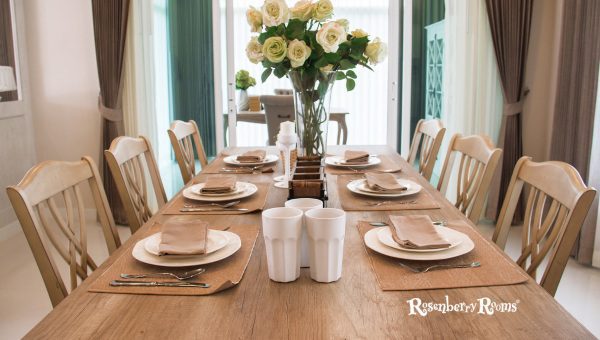
When setting up your dining table, there are a few essential factors to bear in mind. Ensuring that you have the right amount of space between chairs not only offers comfort but also allows for optimal access and mobility around the table.
Let's take a look at three key aspects: determining the number of chairs, considering the size of the chairs, and taking into account the shape of the table.
First things first, you'll need to determine how many chairs you'll be placing around your dining table. This will give you an idea of how much space is required between each chair, ensuring everyone is comfortable and can maneuver without any trouble.
To calculate this, measure the length and width of your dining table. A good rule of thumb is to allow about 24-30 inches (60-76 cm) per chair along each side, as this will give adequate elbow room for your guests and help prevent overcrowding. Here's a simple formula to get started:
Number of Chairs = Table Length (inches) / 24 or 30 (depending on preference)
For instance, if you have a 72-inch long table and want to stick with a more spacious layout:
Number of Chairs = 72 / 30 = 2.4
In this case, rounding down to keep things even, it's best to place two chairs on each side of your table.
The size of your chosen dining chairs plays a significant role in determining how much space should be left between them when arranged around your dining table. Naturally, bulkier chairs will require more room for both aesthetic balance and physical comfort.
Take measurements not only of the width but also include armrests if applicable since these can have a substantial impact on spacing requirements. Additionally, consider leaving at least 6 inches (15 cm) on either side of each chair to ensure that diners can get in and out easily.
For example:
Keep this measurement in mind when placing chairs around your dining table, leaving a minimum of 32 inches between chairs.
The shape of your dining table is another crucial factor when determining optimal chair spacing. There are three primary types to consider: rectangular, round, or square tables.
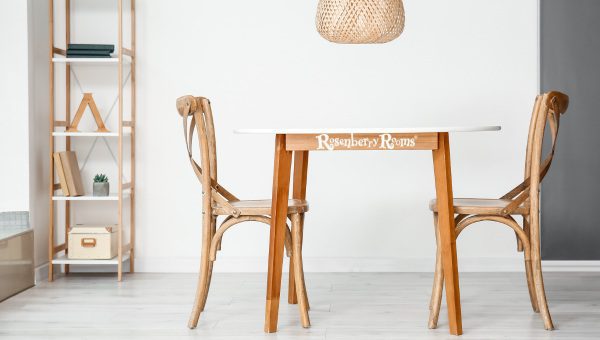
When setting up your dining table, it's vital to provide enough space between chairs. This allows for easy movement and ensures that everyone feels comfortable during a meal.
There are several factors to consider when determining the ideal space between chairs, such as their width, table size and shape, armrests, and other chair features.
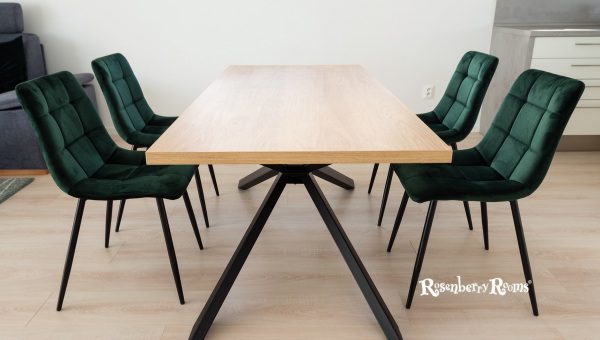
The first step in calculating the optimal spacing of chairs is measuring their width. This will help you understand how much room each chair occupies on its own. Here's how to measure your chair width accurately:
To give each guest adequate personal space and elbow room, it is generally recommended to allow approximately 8-12 inches of additional space around each chair's width.
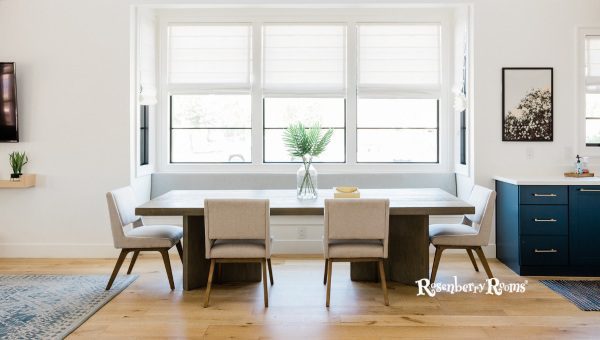
Your dining table's size and shape play a crucial role in determining optimal chair placement. A rule of thumb is to ensure that there are at least 24 inches of table surface per person for comfortable eating.
For rectangular or oval tables, allot about 6 feet of length for every four people seated on the sides or about 4 feet if seating guests at both ends as well. Conversely, square or round tables can afford a bit more flexibility but still require careful attention.
Below is an approximate guide that suggests various table sizes with respect to their seating accommodations:
| Table Shape | Number of People | Table Size Range (ft) |
|---|---|---|
| Rectangular | 2 | 32"x24" |
| Rectangular | 4 | 48"x32"-60" |
| Rectangular | 6 | 72"x36"-80" |
| Rectangular | 8 | 96"x48"-108"x54" |
| Round | 4 | 48"dia |
| Round | 6 | 60"dia |
| Round | 8 | 72"dia |
Keep in mind that these figures are merely guidelines; your specific setup might differ depending on personal preferences and other furniture occupying the room.
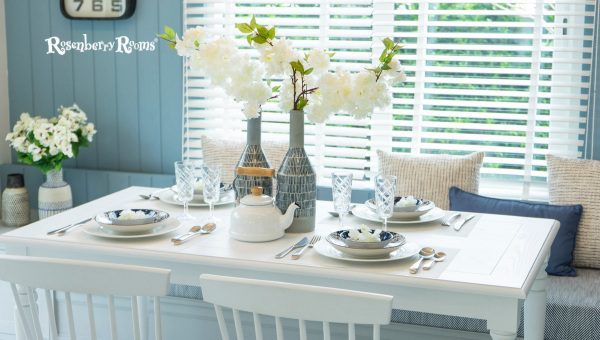
Not all dining chairs are created equal. Some come with armrests, which can further impact the spacing between chairs at the table. Armrests can add up to a few inches on either side of the chair's width, so it's essential to factor them into your calculations when arranging seating.
Additionally, some chairs offer fully adjustable or swiveling features that require extra room for turning or reclining purposes. It is vital to take these factors into account when setting up your dining area.
Don't forget that you also need space behind each chair for guests to comfortably enter and exit their seats. A clearance of at least about 24-36 inches should be sufficient when determining the distance between chairs and walls or other pieces of furniture.
Finding the perfect spacing between dining chairs requires attention to detail and some measurements. Be sure to consider factors like chair width, table size and shape, armrests, and other special features while keeping in mind the need for personal space and mobility.
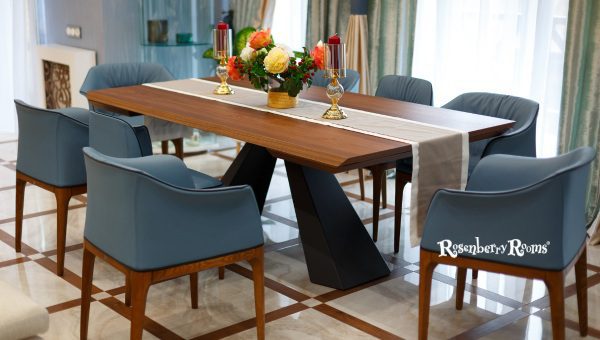
A fundamental aspect of dining room design is not just the spacing between chairs but also ensuring easy access to guests. A well-thought-out layout allows for smooth movement within the dining area, making for a comfortable and enjoyable experience. Consider the following tips to facilitate easy movement and access:
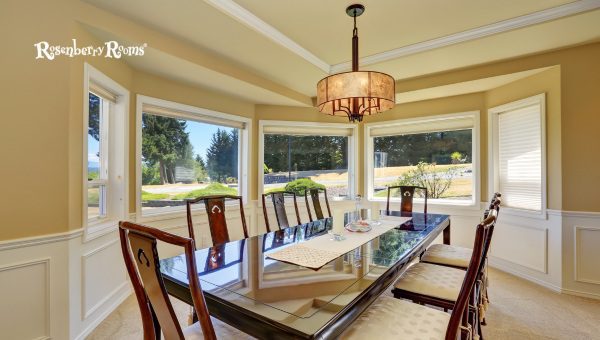
While there are general guidelines to follow for chair spacing, it's essential to keep personal preferences and comfort levels in mind when setting up your dining area. After all, every family is different with unique habits and dynamics.
Look into your preferences when it comes to dining: Do you enjoy having long conversations at the table? Are you typically hosting larger gatherings that require an extra room? Reflect on these questions as they'll inform your choice in furniture arrangement.
Moreover, consider seating arrangements that cater to individual needs. For instance, offering ample armrests can significantly enhance comfort levels – especially for older guests with mobility concerns or those who struggle with upper body strength.
In short, optimize your arrangements based on what feels most comfortable for you and your household.

Many of us love hosting large gatherings: be it holidays like Thanksgiving or special occasions such as birthday parties.
When accommodating a significant number of guests, finding the right balance between seating density and comfort becomes even more critical.
Besides widening your seating space by using an extension table – which adds temporary extra surface area to accommodate more diners – consider these tactics:
Remember to always prioritize comfort over maximum seating capacity.
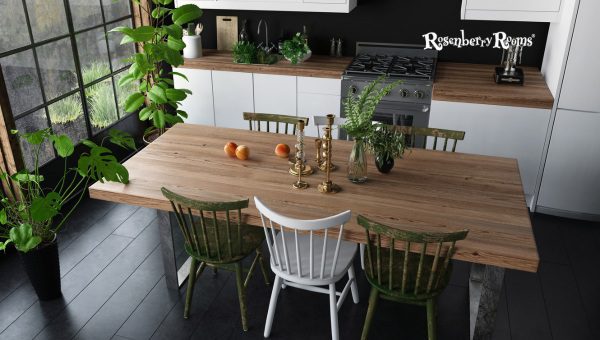
When arranging your chairs for an intimate dinner – say, an anniversary celebration or a casual gathering with close friends – consider creating a warm and cozy atmosphere that fosters great conversation and connection.
To achieve this, place chairs slightly closer together than usual, around 6-8 inches apart, focusing on minimizing distractions from electronic devices or other sources. A round table setup can also foster such intimacy by ensuring that everyone faces each other and maintains eye contact effortlessly.
For even more personalized dining experiences, invest in soft lighting options like dimmable lamps or candles. Such ambiance helps cultivate an intimate setting and promotes rich conversation among close friends or loved ones.
Finding the perfect balance between chair spacing, room layout, access, and ambiance requires some trial and error alongside attention to detail.
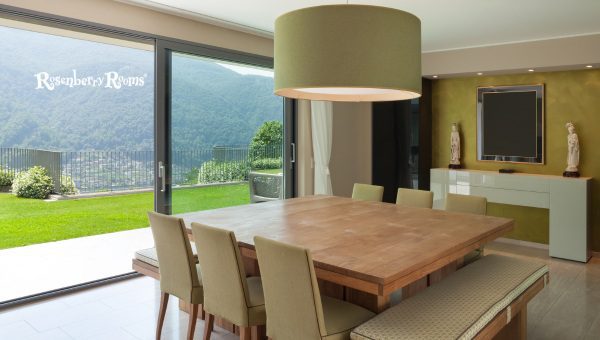
Apart from the dining table and chairs, another vital aspect that can influence seating arrangements is the room size itself. It's essential to take into account the overall layout of your dining area to ensure it not only offers functional space but still maintains a sense of openness.
When planning your seating, consider the following:
By incorporating these considerations into your planning process, you can achieve both a functional and visually appealing dining setup.

While there are general recommendations for chair spacing, it is worth noting that customizable arrangements might cater better to varying events or gatherings.
Some alternative seating arrangements include:
Ultimately, adapting your chair spacing based on specific occasions enables you to establish an ambiance suitable for each unique event.

Finding harmony between aesthetics and functionality is essential when optimizing chair spacing at your dining table. In reality, navigating this balance often requires a combination of intuition, artful thinking, and practical considerations. To achieve this delicate balance:
For example, you may decide on chairs with thinner profiles or minimalistic designs to establish a more open aesthetic without sacrificing surface area for individual plates and utensils.
It's also essential not to overlook the significance of seating accessories, such as cushions or upholstery designs - these features can also contribute significantly to both the appearance and functionality of your dining setup.
By attentively considering these guidelines and being receptive to experimenting, you will seamlessly strike an equilibrium in chair spacing that provides comfort, encourages social interaction, and elevates the visual appeal of your dining room.
The ultimate goal is achieving that harmonious blend of aesthetics and functionality that transforms every meal into an unforgettable experience for you and your guests.
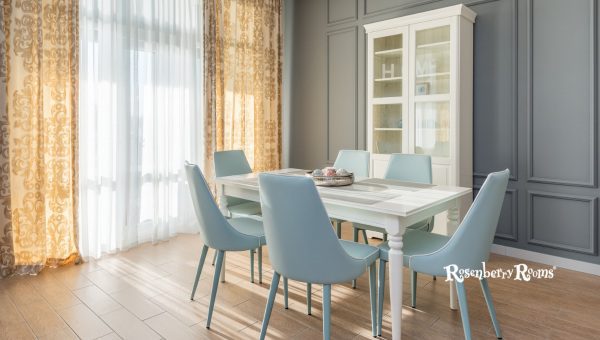
Fine-tuning a dining room setup takes time, effort, and a good eye for aesthetics. Ensuring the perfect balance between form and function can make every meal enjoyable for your household or guests. Here, we've compiled some top tips to make the process of arranging your dining chairs seamless and efficient.
One invaluable tip is visualizing the final layout in your mind before actually moving any furniture. This can save you time and energy by preventing unnecessary trial-and-error attempts. Here are some steps to help you visualize effectively:
Remember that there's no one-size-fits-all solution for arranging your dining room; keep experimenting until it feels just right!
Embracing a blend of unique chair styles can create an eye-catching dining area that showcases your creative flair. Mixing and matching various designs, materials, and colors can lend a spacious feel to the space while enhancing your personal style. Here are some ideas for effectively mixing and matching dining chairs:
Aiming for variety while keeping everything synchronized can truly transform the dining experience. The end goal is to craft a stimulating yet harmonious environment that inspires conversation and connection.
Bear in mind that combining different styles might require careful consideration of spacing requirements—account for adjustments accordingly by measuring each chair's width individually before placing it around the table!
With these top tips on hand, you're ready to create a mesmerizing dining setup that promotes comfort, functionality, and style. Embrace your inner designer as you experiment with multiple themes and arrangements till you find that perfect fit!
The ideal distance between dining chairs largely depends on their width and additional factors such as table size, shape, and chair features. It is recommended to allow approximately 8-12 inches of space around each chair's width to provide ample elbow room and personal space for your guests.
For comfortable eating, consider providing at least 24 inches of table surface per person. Keep in mind that this measurement can vary depending on your specific setup, dining preferences, and the presence of other furniture in the room.
To ensure guests can easily enter and exit their seats, aim for a clearance of about 24-36 inches between the chairs and walls or other pieces of furniture.
Yes, armrests can impact chair spacing as they add a few inches to the overall width of each chair. When arranging seating at your dining table, factor in this additional width to ensure proper spacing between chairs.
When using adjustable or swivelling chairs, make sure you account for any extra room they might require for turning or reclining purposes. This may involve allocating more space than usual around these types of chairs while maintaining adequate personal space for all guests at the table.
Finding the perfect spacing between dining chairs is an essential aspect of creating a cozy and inviting environment for enjoying meals with family and friends.
By measuring chair width, factoring in table size and shape, and considering chair features like armrests, you'll be able to design a functional and aesthetically pleasing dining area that caters to everyone's comfort.
Remember that these guidelines can be tailored according to your personal preferences and the specific requirements of your dining room. So feel free to experiment with different setups until you find the one that suits your space best.
With attention to detail and thorough planning, you'll create a welcoming atmosphere where guests will relish each mealtime experience together.